‘Undue Hardship‘ in Alberta child support cases refers to substantial financial distress that merits a review of established child support payments. It is not a general provision and each case is evaluated individually. The hardship must be directly due to child support payments, confirmed through a rigorous, two-step process including the Standard of Living test. Relevant factors include high levels of debt, excessive child access costs, legal obligations to other dependents, significant income disparity, and disability or health issues. Further exploration will enlighten you about the steps involved in the Standard of Living test and common reasons for claiming undue hardship.
Key Takeaways
- ‘Undue Hardship‘ in Alberta child support cases refers to financial struggles linked directly to child support payments.
- High debt, excessive costs, legal obligations, income disparity, and health issues can contribute to ‘Undue Hardship’.
- Each case is evaluated individually through a rigorous, systematic process.
- This process involves a ‘standard of living test‘ which compares the living standards of both households.
- The test takes into account annual incomes, expenses, support, and calculates household income ratios to determine potential ‘Undue Hardship’.
Understanding the Term ‘Undue Hardship’
In the domain of child support, the term ‘undue hardship‘ pertains to circumstances that permit deviations from mandatory child support payments, provided that certain specific criteria are met. Essentially, it involves excessive difficulty or suffering that disrupts the ability to meet child support obligations. However, it is important to underscore that a simple claim of financial distress or inability to afford payments is insufficient to establish undue hardship.
Several conditions must be satisfied to qualify for this exception. These can include high debt incurred prior to the separation, excessive costs related to child access, legal obligations to support other dependents, significant disparity in the households’ incomes, or severe disability or health issues. However, it is not a blanket provision; each case is evaluated individually, considering the unique circumstances presented.
The process to determine undue hardship is rigorous and systematic, designed to ensure fairness and prevent misuse. An important part of this process is the ‘standard of living test‘, which aims to identify significant disparities in the households’ living standards. If such a disparity is identified, it may justify a deviation from standard child support payments.
The Two-Step Test for Undue Hardship
Understanding the intricate domain of undue hardship in child support cases requires adherence to a two-step test. The first step necessitates the applicant to provide substantial evidence of financial hardship due to current child support payments. This hardship must be connected directly to the payments set out by the Federal Child Support Guidelines, not general financial distress. The applicant must demonstrate that these mandated payments are excessively burdensome relative to their finances.
In the second step, the applicant must prove that their household would endure a lower standard of living than the other party’s household if child support payments were to continue as required by the Guidelines. This involves an in-depth evaluation of the financial circumstances of both the applicant and the recipient. The assessment encompasses the calculation and comparison of the total annual incomes of everyone in both households, adjustments to these incomes, and the comparison of the resultant household income ratios.
Ultimately, this two-step test provides a thorough and fair method to ascertain if an individual is truly experiencing undue hardship due to child support payments.
Common Reasons for Claiming Undue Hardship
Exploring the domain of child support claims, one often encounters various reasons that parents in Alberta put forth to substantiate their claims of undue hardship. One of the common reasons is high levels of debt incurred to support the other parent or a child before separation. However, such debt needs to be necessary and substantial for it to be considered.
Another reason could be excessive expenses incurred to facilitate access with the child. This could be due to high travel costs because the parent paying child support lives far away. However, these expenses need to be quantified in detail.
Legal obligations to support another adult or child also feature as a common reason for claiming undue hardship. For example, a parent may have a legal responsibility to support an aging parent or a child from a previous relationship. This tends to create a significant financial burden.
Substantial income disparity between households can also lead to claims of undue hardship. If the receiving parent’s household enjoys a substantially higher standard of living, this income disparity could substantiate an undue hardship claim. Disabilities or significant health issues that limit earning capacity and increase expenses can also constitute valid grounds for an undue hardship claim.
Explanation of the Standard of Living Test
Building on the reasons for claiming undue hardship, it becomes essential to elucidate the ‘Standard of Living Test‘, a critical tool used by the courts in cases exhibiting a significant disparity in the household incomes of the paying and recipient parent.
The ‘Standard of Living Test’ is a method used to assess whether the standard child support payment would lead to a considerable difference in the respective living standards of the two households. This test becomes relevant when the recipient parent’s household enjoys a significantly higher standard of living. If such difference is determined, it may support a claim of undue hardship, potentially justifying a deviation from the standard child support payments.
This test employs a multi-step process to evaluate the financial circumstances of both parties and compare their respective household incomes. The aim is to provide a fair representation of the available income for each household. The test, while complex, ensures that payment of child support does not result in an unfair burden on the paying parent, or an unjust enrichment of the recipient parent, hence promoting a fair and balanced approach.
Steps Involved in the Standard of Living Test
The Standard of Living Test is integral to evaluating undue hardship claims. It involves a series of meticulous steps aimed at comparing the financial circumstances of the paying and recipient households.
The first step involves determining the annual incomes of all individuals in both households. This includes not only the paying and receiving parties but also other contributors like new partners.
The next step is adjusting the income by deducting proper expenses and adding relevant support. This step aims to present a thorough view of available income for each household. Once the adjusted incomes are determined, they are combined to provide a detailed view of each household’s economic resources.
The subsequent step involves calculating the ‘low-income measure amount‘ for each household using the Guidelines table. This amount is based on household size and local low-income thresholds. The households’ incomes are then divided by the low-income measure to produce a household income ratio.
The final step is comparing these ratios. If the paying party’s household ratio is higher, it suggests they enjoy a higher standard of living than the receiving party’s household, potentially indicating undue hardship.
Frequently Asked Questions
What Happens if the Courts Determine That There Is No ‘Undue Hardship’ in a Child Support Case?
If the courts determine no ‘undue hardship’ in a child support case, the obligated parent must adhere to the standard child support payment guidelines. Non-compliance could result in legal consequences, including wage garnishment or fines.
Can ‘Undue Hardship’ Be Claimed Retrospectively for Previous Child Support Payments?
In Alberta, ‘undue hardship’ cannot be claimed retrospectively for previous child support payments. The claim must be made at the time of financial difficulty and cannot be applied to past obligations retroactively.
How Does the Court Process Work When Applying for ‘Undue Hardship’ in Alberta?
When applying for ‘undue hardship’ in Alberta, the court requires evidence of financial hardship and a lower standard of living compared to the other party. A multi-step assessment, including the ‘standard of living test’, is conducted.
What Role Does a Legal Representative Play in Helping Prove ‘Undue Hardship’ in a Child Support Case?
A legal representative plays a pivotal role in ‘undue hardship’ cases by collecting evidence, presenting a compelling argument, maneuvering through complex legal procedures, and ensuring that the client’s rights and interests are effectively represented in court.
Are There Any Specific Examples of Successful ‘Undue Hardship’ Claims in Alberta?
In Alberta, successful undue hardship claims in child support cases are case-specific and hinge on factors such as high pre-separation debt, excessive child access costs, other support obligations, income disparity, or health issues.
How Does “Undue Hardship” Impact the Age When Child Support Ends in Alberta?
Undue hardship can influence what age child support ends alberta, especially in complex financial situations. Courts assess both parents’ circumstances, potentially extending or modifying support obligations. If undue hardship affects one parent’s ability to pay, it can impact decisions regarding the duration of child support based on the child’s needs and dependencies.
Conclusion
In summary, ‘Undue Hardship‘ in Alberta child support cases is an intricate legal concept involving a rigorous two-step test and the Standard of Living Test.
Factors such as high debt, excessive child access costs, and income disparities are pivotal considerations. Exploring this terrain requires a thorough understanding of the legal framework and its nuances.
It underscores the importance of professional guidance to guarantee the fair administration of child support, safeguarding the best interests of all parties involved.
References
Federal Child Support Guidelines, SOR/97-175
https://www.canlii.org/en/ca/laws/regu/sor-97-175/188048/sor-97-175.html

We currently have three offices across Alberta — Edmonton, Calgary, and Red Deer. We serve the entire province of Alberta (and BC). We also have the infrastructure to work with any of our clients virtually — even the furthest regions of Alberta.
Call 1 (855) 892-0646 (toll free) to get routed to the best office for you or contact us online for general inquiries.
We also have a dedicated intake form to help you get the ball rolling. Our intake team will review your specific case and advise you on the next steps to take as well as what to expect moving forward. That’s the best way to schedule an appointment
Our offices are generally open 8:30 a.m.—4:30 p.m., Mon—Fri.


Raveena Gill
FAMILY LAWYER
Raveena’s approach focuses on incorporating each particular client’s unique values and goals when determining the best course of action in their matter
The Legal Review Process by Spectrum Family Law
- Spectrum strives for high-quality, legally verified content.
- Content is meticulously researched and reviewed by our legal writers/proofers (usually local law students).
- Details are sourced from trusted legal sources like the Family Law Act.
- Each article is edited for accuracy, clarity, and relevance.
- If you find any incorrect information or discrepancies in legal facts, we kindly ask that you contact us with a correction to ensure accuracy.


